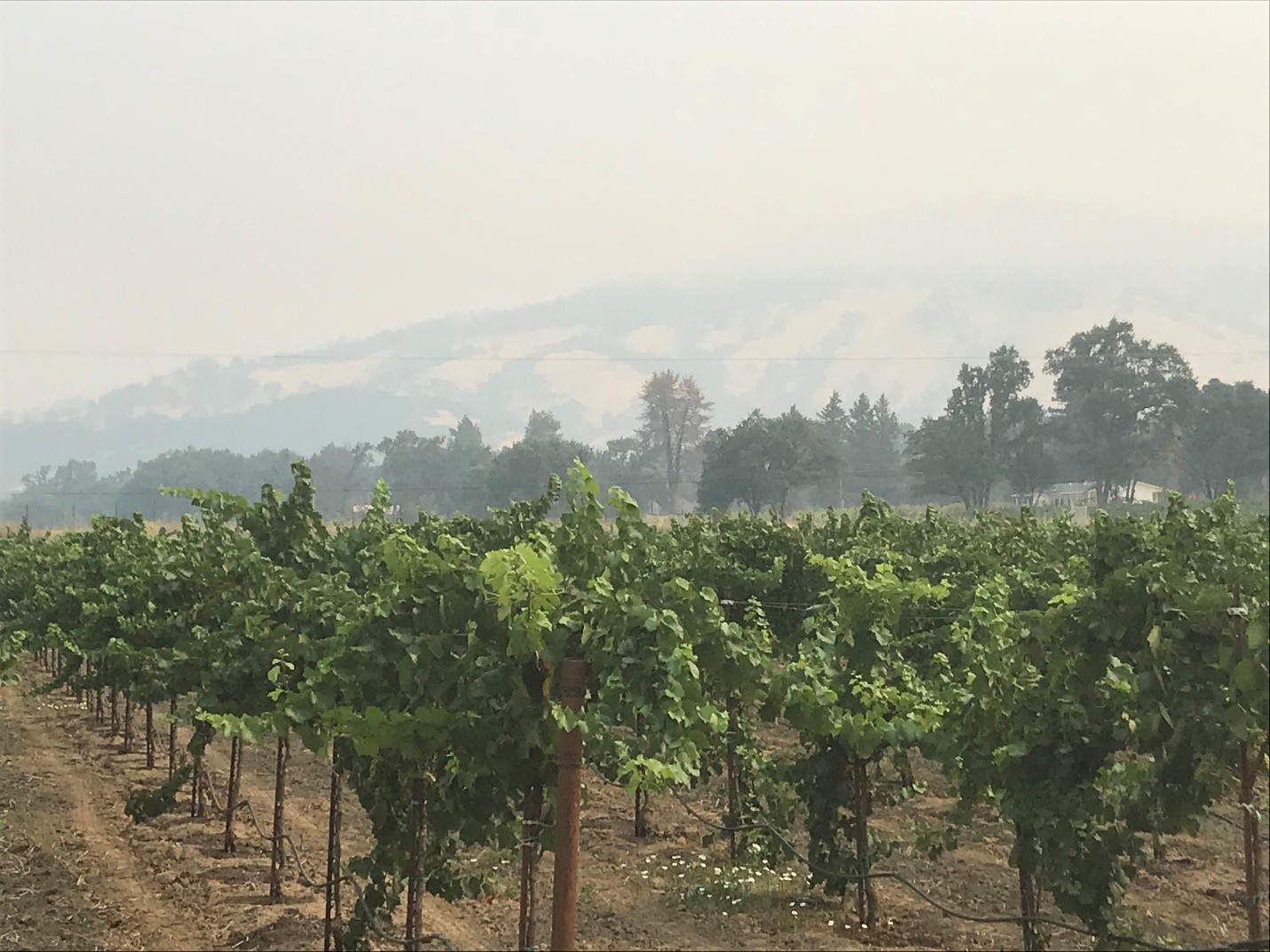 Fire is a regular occurrence in California every summer.
Fire is a regular occurrence in California every summer.
“For anyone outside of the state, you only hear about an incident when it destroys a lot of structures, burns iconic tourist sites, or gets so large that it pulls massive amounts of resources. All of those have happened this fire season multiple times over and continue,” Taylor Hillman (AgNet West, Clovis, California) said.
Three major fires developed nearly simultaneously in mid-August. All three were caused by small lightning fires that burned together and multiplied in size overnight with Santa Ana winds. Labelled “Lightning Complex Fires,” these incidents blanketed California from Bakersfield to Humboldt with smoke and ash.
“The usual suspects for agriculture were immediately impacted,” Hillman added. “Livestock operations scrambled to evacuate to local fairgrounds and high schools. Feed became scarce, and communities pulled together with donations. It is sad to say, but those individuals affected are kind of used to it, and it seemed semi-normal at the beginning.
“What wasn’t normal was what ensued around agriculture shortly after. With COVID-19 recommendations for worker safety, N-95 masks for workers were scarce already. The magnitude of the three big fires at the time triggered new smoke exposure protections for workers. Operations now had to have N-95 masks for any worker outside, whether they were six feet away from each other or not. Local farm bureaus and associations organized free mask giveaways when and where they could. Some operations slowed to a crawl, and harvests were delayed.
“Fires continue to pop up around the state; and, because resources are so limited, many small fires are left until they threaten property and life or get to a certain size. Those three fires in August alone totaled around 800,000 acres burned, destroying around 2,000 acres and killing 21 people. A new fire has developed that, according to reports, has already burned through a few wineries in Napa County and many acres of vines.
“But again, fires are fairly normal for the agriculture community in California. The industry is resilient, weathers the storm, and finds a way to keep going. The smoke and ash in many of the growing areas subsided and -- even with new fires -- have not gotten as bad as they were in late August. Harvests again picked back up, and livestock producers are assessing the damage; however, the most impactful problem from the fires is speculative.
“After the Tubbs Fire ripped through the North Coast Wine Region of California in 2017, a few wineries refused to buy contracted grapes from growers claiming what they called “smoke taint.” It has been a snowball effect since then with more occurrences and associations securing funding to look into the science of the issue. Basically, users test for a volatile compound, and if there are amounts of it in the grape, more and more wineries are voiding the contract. There is little known about the impacts of this compound as some varietals produce them naturally, and there are no thresholds for testing. Due to the fire activity this year, many buyers are only accepting crops that go through the testing process. However, there are only a few facilities that can test for the compound, and growers are reporting a 30-day or more waiting period.”
“If the delay is a 30-day delay, then effectively that winery is saying ‘we’re not going to take your crop.’ So that’s a problem,” said California Association of Winegrape Growers President John Aguirre. “Delays at this point in time in the harvest cycle and the growing season can be absolutely devastating to a grower.”
There has been an oversupply problem for some variety of wine grapes for a few years. Allied Grape Growers called for 30,000 acres of grapes to be removed from California production at last year’s Unified Wine and Grape Symposium. COVID-19 then shut down the restaurant industry, which significantly impacted wine sales. With an oversupply of grapes and unmoved product from the pandemic, many buyers are not excited to take on more fruit that could be flawed by smoke.
“I’d call it a ‘get out of jail free’ card in some cases where they’re using potential smoke exposure as an excuse to not bring the grapes in or to delay harvest for evaluation,” said Allied Grape Grower President Jeff Bitter. “Some buyers were not in a position to want to accept the entire production from this year’s crop because of their own oversupply situations due to COVID and the shutdowns.”
